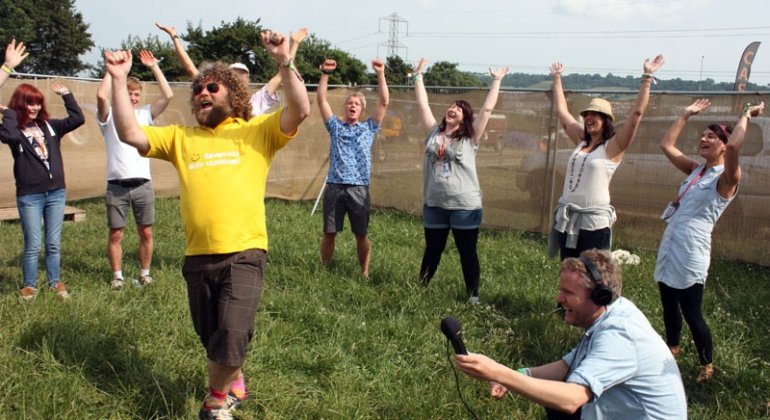Hasya yoga, also known as laughter yoga, is a form of exercise that incorporates laughter, deep breathing, and yoga-like stretches. Dr. Madan Kataria, a medical doctor, created it in India in 1995 as a way to improve physical and mental health through the simple act of laughing.
Laughter yoga is a set of breathing and laughter exercises designed to increase the production of endorphins, the body’s natural feel-good chemicals. The practice is founded on the notion that laughter is a natural stress reliever and that forcing oneself to laugh can have beneficial effects on the body and mind (Kataria, 2005).
Laughter yoga has been shown in studies to have a variety of mental health benefits. A study published in the Indian Journal of Psychiatry in 2010 discovered that laughter yoga was effective in reducing anxiety and depression symptoms in a group of elderly people (Sharma et al., 2010). Another study published in the Journal of Alternative and Complementary Medicine in 2011 discovered that laughter yoga improved mood and quality of life in a group of cancer patients (Lengacher et al., 2011).
Laughter yoga has been shown to improve physical health in addition to its mental health benefits. In a 2012 study published in the Journal of Cardiovascular Nursing, laughter yoga was linked to improved cardiovascular function in a group of postmenopausal women (Bourgeois et al., 2012). Another study published in the Journal of the American Medical Association in 2013 discovered that laughter yoga was effective in lowering blood pressure in a group of hypertensive individuals (Schneider et al., 2013).
Incorporating laughter yoga into a mindfulness practice can be a fun and enjoyable way to cultivate a sense of present moment presence and awareness. Practitioners can learn to observe and accept their thoughts and feelings without judgment by focusing on the physical sensations and emotions that arise during laughter yoga (Kabat-Zinn, 1990). This can help to increase self-awareness and self-acceptance, which can lead to a better overall sense of well-being.
Mindfulness is a therapeutic mental state achieved by focusing one’s awareness on the present moment while calmly acknowledging and accepting one’s feelings, thoughts, and bodily sensations (Baer, 2003). It is a type of meditation in which practitioners practice being fully present in the moment without judgment. The practice has ancient Eastern philosophical roots and has been adapted and integrated into various Western psychological therapies over the last few decades (Kabat-Zinn, 1990).
There is a growing body of research on the physical and mental health benefits of mindfulness. According to a 2014 review of the literature published in the Journal of the American Medical Association, mindfulness-based therapies were effective in reducing symptoms of anxiety, depression, and pain, as well as improving overall well-being (Goyal et al., 2014). Mindfulness has also been shown in other studies to improve immune function (Davidson et al., 2003), lower blood pressure (Tang et al., 2015), and improve sleep quality (Grossman et al., 2004).
Laughter yoga combined with mindfulness practices can be a powerful way to improve overall well-being and reduce stress. If you want to incorporate these practices into your daily life, there are plenty of resources to help you get started. Try the Laughter Therapy mobile app, which provides a variety of laughter yoga exercises and mindfulness practices that can be done from the comfort of your own home. The app also contains guided meditations and other tools to assist you in developing a daily mindfulness practice.
Finally, laughter yoga is a fun and effective way to improve both your mental and physical health.





Pingback: Mindfulness 101: How to Make it a Daily Habit